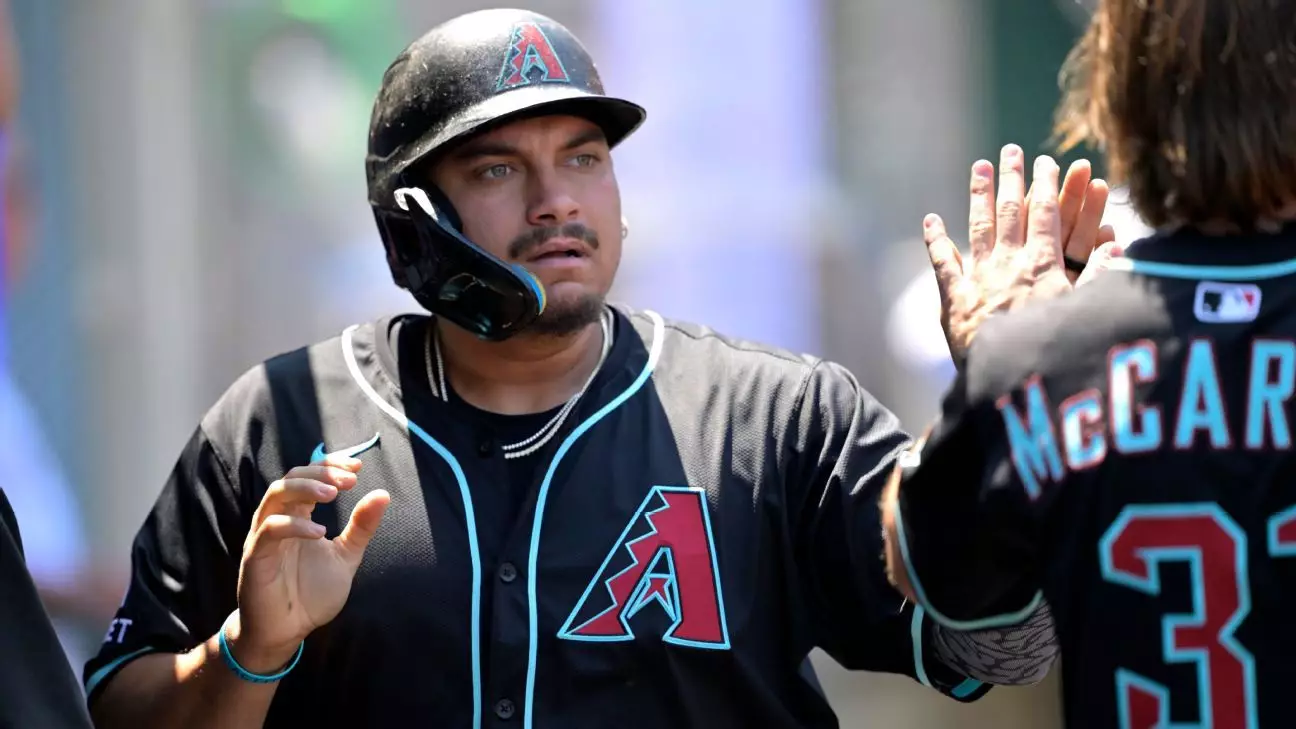In the opening salvo of Major League Baseball’s trade season, the Seattle Mariners sent a clear message to the league: they are in it to win. By acquiring first baseman Josh Naylor from the Arizona Diamondbacks, Seattle demonstrates its unwavering commitment to climbing the postseason ladder. This deal isn’t just about adding another name; it’s about reshaping the team’s core and reasserting their ambition to contend after nearly a decade of postseason drought. The Mariners’s decision to trade promising pitching prospects like Brandyn Garcia and Ashton Izzi reveals a calculated risk: they prefer immediate impact over long-term prospects, a move that shows their confidence in their current roster and their relentless pursuit of a playoff spot.
Seattle’s front office clearly believes that their window to capitalize on their roster’s potential is now. Their willingness to part with prospects who are still ascending through the minors indicates an understanding that this season’s success is worth the short-term sacrifice. The Mariners are positioning themselves as aggressive contenders, not content with incremental improvements but aiming for a significant step forward. They have recognized that adding a power-hitter like Naylor — who offers both stability and a clutch mindset — could be pivotal in securing a postseason berth, especially in a fiercely competitive American League.
Arizona’s Strategy: Selling Off Key Assets and Rebuilding for the Future
Arizona, on the other hand, appears to be embracing a different strategy. With their surprise run to the World Series only a year ago, expectations soared, but injuries and inconsistent performance have dimmed their playoff prospects. The Diamondbacks’ openness to trading star players like Naylor and potentially others such as Eugenio Suarez, Merrill Kelly, and Zac Gallen signals a calculated pivot toward renewal rather than contention this season. They’re prioritizing dynamic prospects and future flexibility over short-term gains — a common theme among rebuilding organizations.
By trading away Naylor—a proven power hitter with a low strikeout rate—Arizona signals that they are more interested in building a foundation for the future rather than chasing fleeting playoff hopes. Their prospects, including left-handed reliever Brandyn Garcia and young pitcher Ashton Izzi, indicate a focus on honing a core of youthful talent. This approach also allows Arizona to remain competitive in their division as they shuffle their roster to sustain and develop young prospects, betting on a more sustainable path to future success rather than risking their durability on a potential playoff push that may fall short.
Trade Conundrum: Balancing Immediate Needs with Long-term Vision
The trade of Naylor highlights a broader dilemma that teams often face: should they chase immediate success at the expense of their long-term development? Seattle clearly believes the answer is a resounding yes. They are betting that their current roster, combined with key additions, can push them over the playoff threshold. Their reluctance to trade their best prospects, such as shortstop Colt Emerson or outfielder Jonny Farmelo, underscores their confidence in their talent pipeline and belief that a playoff run could be transformative, both in boosting team morale and attracting more talent.
Arizona’s willingness to part with veteran assets rather than stand pat also reflects a pragmatic approach; they recognize that rebuilding often requires tough decisions and patience. Both teams are strategically leveraging the trade deadline to either accelerate their bids for postseason glory or set up a more sustainable future. Their contrasting philosophies showcase the complexity of managing a competitive team in a dynamic league where short-term rewards and long-term stability constantly clash.
Future Implications: Short-term Rush versus Sustainable Success
The Mariners’ acquisition of Naylor suggests a tactical shift, emphasizing proven talent that can contribute immediately. With their recent success—marked by ending a 20-year postseason drought—they aim to capitalize on their momentum. Naylor’s power and plate discipline fit seamlessly into their lineup, and his experience in clutch situations could be the difference-maker in tight games down the stretch.
Conversely, Arizona’s focus on prospects and rotation depth reflects a more patient, long-view strategy. Their pursuit of pitching help, particularly with players like Kelly and Gallen potentially leaving via free agency, underscores their recognition that sustainable success hinges on developing young talent and maintaining flexibility. Both strategies have their merits and risks, but the underlying truth is that the trade season acts as a crucible where initial plans are tested by the reality of competitive imperatives.
This early trade activity is more than just a transaction; it’s a microcosm of the evolving landscape of Major League Baseball. Teams like Seattle are daring to push all-in, trusting their core and seeking quick fixes to maximize their postseason chances. Meanwhile, Arizona exemplifies a more measured, rebuild-oriented approach, prioritizing future assets over potential immediate gains.
As the deadline approaches, it’s clear that the league’s best teams are strategically choosing their paths, understanding that the stakes go beyond this season. The choices they make now will shape their competitiveness for years to come. In the end, trades are not merely about adding or subtracting players—they are about defining a team’s identity, its immediate ambitions, and its underlying philosophy toward sustained excellence. The next few weeks will reveal which approach will ultimately lead to glory and which might set the stage for a more promising future.


Leave a Reply